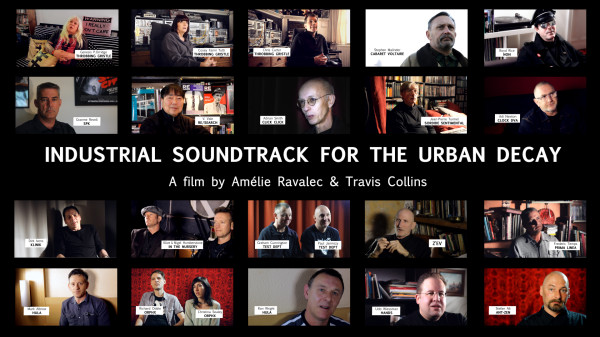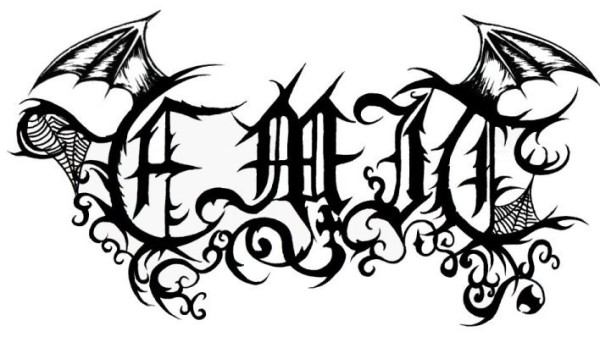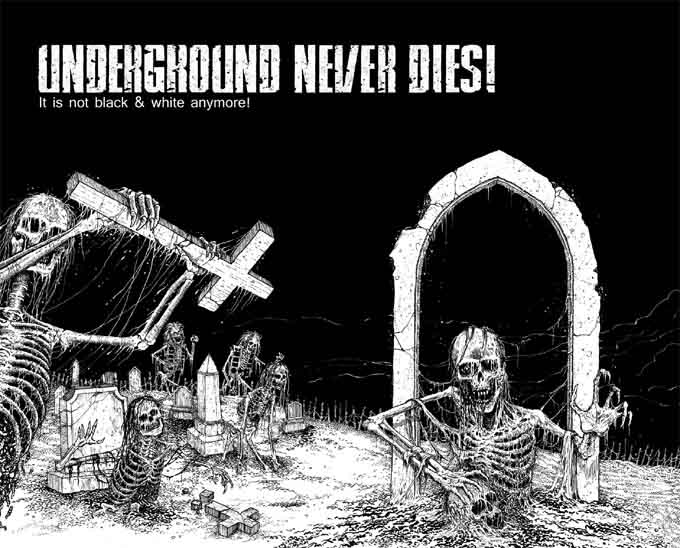
What are Sadistic Metal Reviews? Most people think socially, which means to approve of everyone and everything. We think critically, which means to look at the music itself. This means there will be hurt feelings, since 99% of everything is mediocre (at best) and 99% of people are delusional. Welcome to elitism. Enjoy the sweet taste of tears… and occasional quality metal.
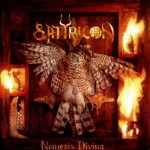 Satyricon – Nemesis Divina
Satyricon – Nemesis Divina
In a stroke of great luck and management genius, Satyricon bring together the guitar talents of Nocturno Culto (Darkthrone) with a style similar to that of later Enslaved, in which death metal riffing is varied between chords and single notes at a time, producing an acerbic melody crashing into pummeling buffet of aggressive power chording. Riff forests rotate around a handful of themes per song that are swept up into their own maelstrom and through gated flow control dropped into a final lock-on to a summary motif. There is a carnival atmosphere, owing to both the circular
songwriting patterning and use of keyboards to accentuate dominant beats and central tones. While not profound, this release is enjoyable, and in its aesthetic showed what could — with the help of someone as powerful as Nocturno Culto on guitars — be produced from the otherwise confused fecalization in musical form that is Satyricon.
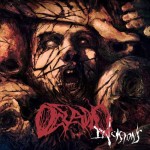 Oceano – Incisions
Oceano – Incisions
This is what Earache Records has reduced itself to: signing deafkore. Oceano plays metalcore with death metal “sounds” that are sandwiched between Meshuggah-esque mechanical rhythms in songs that have the soul of Slipknot. This is one dimensional “angry at school and the gub-ment” music that reveals how norming death metal towards encompassing dancehall conventions (breakdowns and “groove” emphasis) was a bad idea. In the end, this limited and fashion oriented genre at it’s “best” sounds like the musical version of Danny DeVito’s classroom during the beginning of Renaissance Man.
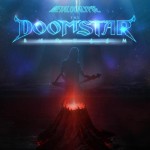 Dethklok – Metalocalypse: The Doomstar Requiem A Klok Opera
Dethklok – Metalocalypse: The Doomstar Requiem A Klok Opera
Irony is a form of social camouflage. That is, it allows you to conceal your social stumbles under a layer of socially-approved insincerity. When you do something stupid, you claim you meant it ironically. If it’s not funny, it’s ironic. It’s basically a giant excuse for failure that makes you still seem like you “meant to do that.” Dethklok has always irritated me with its wimpiness because it can’t own up to what it means to say. The “Klok Opera” is no different; based loosely on Rocky Horror Picture Show and other send-ups of this nature, this rock opera is a parade of cliches taken to stereotypical extremes to be, you know, funny. I imagine it’s more interesting while watching the video, but as music it’s mediocre at best and strikingly empty. There are no themes here that could stand on their own; this wouldn’t make the cut as ordinary music, but seems to survive because there’s comedy attached. If you like Adam Sandler movies, and think that people doing stupid stuff is somehow really funny, you probably have no life and might think this is OK. The oddity is that when the ‘klok decide for a few moments to man up and try to take life as a real experience, as in “Blazing Star” they come up with passable riffs. Nowhere is there evidence that these could be integrated into any kind of song structure, but let’s face it: comedy is a genre of face value statements, not depth, and so this fits and shows how the limits of its creators determined its ultimate form. I’d really like for metal to have a sense of humor, and thus to enjoy this, but I end up feeling like I’ve just encountered another one of the plastic disposable products of modern society that lacks the balls to own up to what it wants to say. So here’s a one-word review: “lame.”
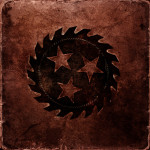 Whitechapel – Whitechapel
Whitechapel – Whitechapel
Variations on monotonic chugging patterns are all that could be found on this metalcore release that only pretends to be death metal on the outside through “ANGRY” vocals and an “EXTREME” drum performance. The incorporation of Tool-esque “soft” meandering moments suggest a sense of trying to be “deep”, but like all deafkore releases, this is just another marketing point to check off the list to make this product appear more valuable than their other vapidity pandering peers through gimmickry. A lot of these riffs feel like more downtuned renditions of what we already heard in the mid 90s through Fear Factory, Machine Head, and other bands that brought “metal” into the mainstream by downgrading it into a hip-hop image pandering lifestyle product. The melodic underpinnings are just that — underpinnings — to dress up the chugging variations for the sake of making people “mosh” on the “dancefloor” without any of them becoming self-aware and noticing that everything on here is basically the same thing on repeat for about 40 minutes. Pathetic lyrics show a heritage owed more to Korn than anything from the death metal field. All in all, another excuse for Metal Blade to cash in on trends before severing ties when the easy money dries up.
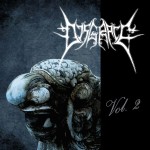 Disgrace – Vol. 2
Disgrace – Vol. 2
The “lost” second album by Finnish band Disgrace sees them throw away the non-linear song structures and underground metal aesthetics to embrace what was hinted at on their Grey Misery LP: rock music. Continuing that albums proto “death n’ roll” grooves but within the context of bluesy rock numbers sees Disgrace making reasonable 90s styled “angsty” rock in the vein of Helmet or Monster Magnet, but this music is so passive and “safe” when compared to anything from the metal realm because there’s no artistry to be found here. Just another reason to “have fun” and “rock out”. In doing that, I suppose this music could succeed in a mainstream level if this band had better promotion, but it also reveals a simple method those without ideas use for making interchangeable teeny-bopper stoner music that makes it no wonder why albums like this exist in the first place.
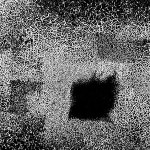 Boris – Präparat
Boris – Präparat
When bands have nothing to say but want to receive attention, they make fashion statements in the form of ironic gestures and imagery. Boris is a band with no identity and nothing to say, so they comment on existing musical forms by playing up to their conventions and giving it an outwardly “ironic” appearance for novelty’s sake, jumping from genre to genre offering nothing worthwhile the entire time. Here they mimic the dream pop stylings of bands like Jesu and throw some repetitive one riff “sludge” tracks in there to appease their hipster “drone” audience. With so many hipster albums already fitting this description, it’s obvious the only reason Boris is ahead of the pack is through their poorly enunciated vocals and “strange” artwork which Starbucks aficionados will perceive as “ironically different”. A worthless artistically void lifestyle product that serves the same function as owning a season of Arrested Development on DVD.
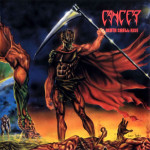 Cancer – Death Shall Rise
Cancer – Death Shall Rise
Doomed to stumble upon the evolutionary ladder, Cancer released a very poor excuse for a death metal album. Sounding like WASP on a bad day attempting to make itself sound like older Sepultura or Death through a Morrisound production, Cancer create plodding mid-tempo fare that is so lifeless it makes Benediction look like Dismember by comparison. Block headed riffs are given a “death metal makeover” through the insertion of tremolo picked notes between simple rock chord progressions played on downtuned guitars. If Nuclear Blast tasked Terri Schiavo with creating a Benediction B-sides album, this would be the result.
 Animals as Leaders – Weightless
Animals as Leaders – Weightless
Sounding more like a glitchy video game soundtrack than anything metal, Animals as Leaders make music that is complex on a production and performance level, but very simple in its intent. Underneath melodic shred guitar, jazz noodling, “complex” chord shapes and samples is nothing but rhythmic chugging sounds with a “soft and heavy” nu dynamic that renders all the complexity on the performance front moot since this is very boring and obvious music that sounds like it would function better as stock video game music than a legitimate listening experience. As such, this is the background noise gullible oafs try to pass on to others as “complex, thinking man’s music” but there really is nothing to this aside from functioning as a musical suite where technique is on display, but no artistic vision. With so many releases fitting this bill, this offers nothing more than the gimmick of being a “modern” version of what could be a Shrapnel Records release. Vapid noise for heavily medicated deficients who will soon abandon their “metal” albums for the “mature and contemporary” sounds of A Perfect Circle and The Mars Volta in about 2 weeks. As always, nothing on offer but marketing schtick got the upper hand.
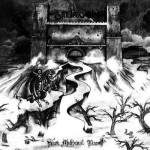 Satyricon – Dark Medieval Times
Satyricon – Dark Medieval Times
Temptingly close to the original thrust of passion which made black metal from Scandinavia so popular, Satyricon is everything the original had except the last 5% of “getting it” that entails address of the spirit of the darkness invoked by these bands. Gently harmonizing black metal uses melodic riffing to build a mood and then levels it, going back to its central supposition and basic riff constructions; however, the longer the melodic riffs get, the clearer it is that they have no centering in concept, although they’re clearly central in tone. One has to see Satyr as a tragic figure, being as musically, socially and intellectually competent as his peers, but lacking something that Fenriz and Ihsahn did not, possibly the same void that impelled him to be the one to start the record label that would carry on black metal — including the music of Darkthrone — after its breath of life had died. While there is nothing to disqualify this release, it is the recommendation of this reviewer that the sensible listener avoid it and focus on the great releases instead of this also-ran.
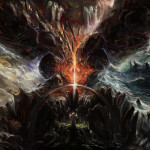 Empyreus – The Burning Path
Empyreus – The Burning Path
Better get some penicillin! Proof that black metal is being paraded around by its cliches can be found in the buffoonery known as The Burning Path. Think of this music as [b]lack metal waterboarding, except that it interrogates you until your inner clown is exposed and is used against you… Grim, much like Frankenberry and Count Chocula are “scary” in the cereal industry, Empyreus charge ahead with an additional copy of chromosome 21 to subject the listener to an assortment of late 1990s black metal stereotypes. As a result, the music is a potboiler of haphazardness in which nothing worthwhile is conveyed outside of dinky mimicry. However, The Burning Path sounds like [b]lack metal when you’re not paying attention. Perhaps people who don’t listen to music will enjoy it.
33 CommentsTags: animals as leaders, cancer, dethklok, disgrace, empyreus, nemesis divina, sadistic metal reviews, satyricon, whitechapel
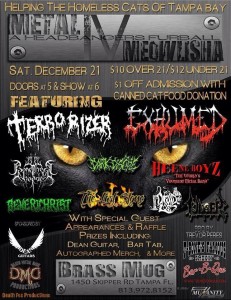 Heather and Donald Tardy (Obituary) may operate the world’s most unique charity. Metal Meowlisha consists of metalheads helping cats, and it presents its annual fund-raising concert live in Tampa, FL with Terrorizer, Exhumed, Druid Lord and a host of other bands.
Heather and Donald Tardy (Obituary) may operate the world’s most unique charity. Metal Meowlisha consists of metalheads helping cats, and it presents its annual fund-raising concert live in Tampa, FL with Terrorizer, Exhumed, Druid Lord and a host of other bands.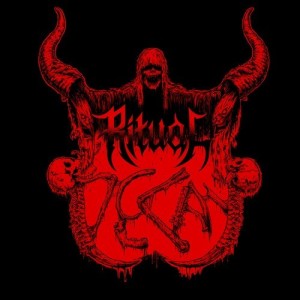
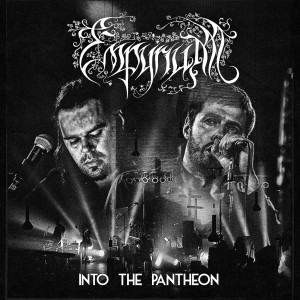









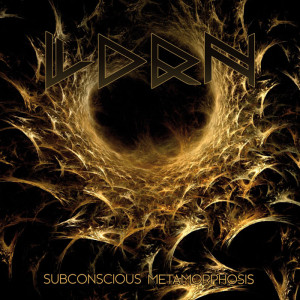 Bleak minimalism enshrouded in atonality helped popularize bands like Antaeus and Aosoth. Austere ingredients were then implemented to include aspects of nihilism which eclipse the human condition.
Bleak minimalism enshrouded in atonality helped popularize bands like Antaeus and Aosoth. Austere ingredients were then implemented to include aspects of nihilism which eclipse the human condition.